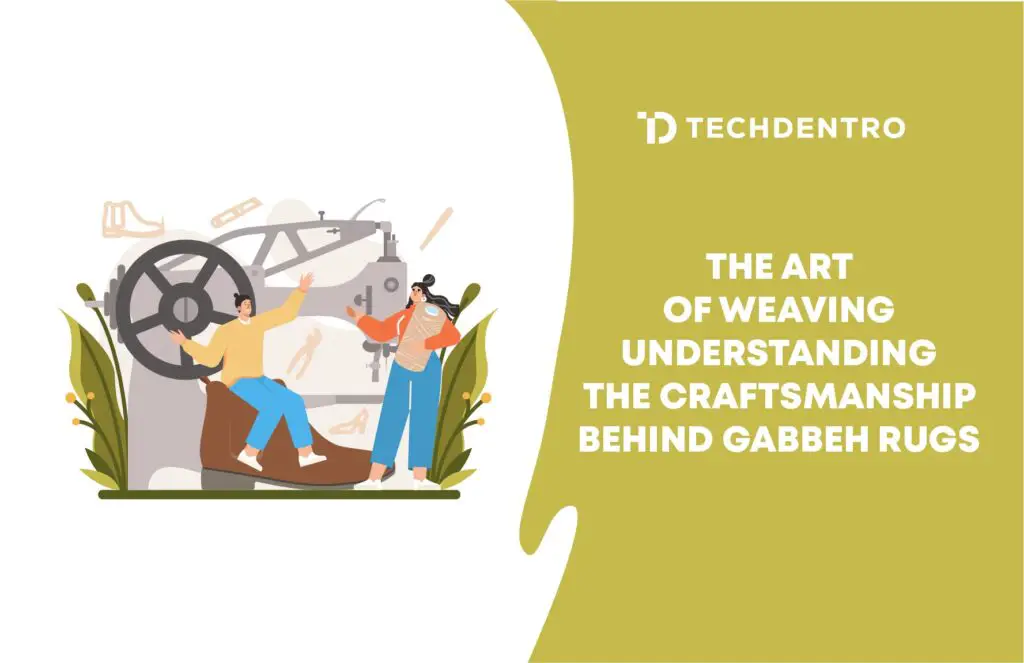Gabbeh rugs are the art of nomadic tribes from the southern Fars province of Iran. These weavers produce rugs with Turkish solid and Kurdish weaving influences.
These tribal rugs typically display figures and symbols to portray a scene or feeling artfully. The rich, saturated natural dye colors make a Gabbeh rug very appealing.
The Warp
The warp is the foundation of Gabbeh rugs, running parallel to the weft threads and forming the foundation for the entire piece. Artisans use a tool called the kaiju, an enormous rod wrapped around a smaller one to help control the position of the warp threads as they weave.
Weaving is often improvisational, capturing a nomad’s spirit through geometric forms and natural-inspired emblems. Intense earthy ochres and terra-cottas reflect the desert landscape, while vivid blues and greens evoke rivers and meadows.
Authentic gabbehs are woven with premium Iranian wool dyed using high-quality vegetable dyes to create luminous colors that are colorfast. To prevent color transfer, treat your Gabbeh carefully by vacuuming regularly and promptly addressing spills. Layer your Gabbeh with other textures like jute and sisal to elevate its visual impact for the best results.
The Weft
Gabbeh rugs are woven on traditional village looms with a broad, flat base. These looms are a remarkably efficient and durable form of weaving. The loom’s design allows the weaver to pass weft yarn in and out of crossed and uncrossed warp threads without laboriously weaving around a needle or other device.
Traditional Gabbeh weavers use high-quality vegetable dyes to color their wool, resulting in vibrant and long-lasting pieces that are highly resistant to fade or bleeding. Sometimes, gabbehs are woven entirely with undyed wool in more neutral tones for a modern-feeling aesthetic.
The improvisational nature of Gabbeh’s weaving gives rise to bold, abstract motifs that capture a sense of whimsy and spontaneity. Their earthy ochres and terra cottas mirror the desert landscapes of nomadic tribes, while their symbols reflect stories of prosperity, protection, and cyclical life. Their intrinsic irregularities pair well with various decor styles and complement textured throw blankets, woven baskets, and natural wood furniture.
The Pile
Unlike most hand-knotted rugs woven with pre-designed patterns, Gabbehs are often improvised as weavers follow their imagination and inspiration from their environment. The designs can range from landscapes and sketches of animals or trees to more abstract geometric sketches.
This unique artisanal approach to rug weaving gives the Gabbeh its character. It is what makes these rugs one of a kind and adds a layer of rich heritage to any space.
Qashqai artisans use the finest quality wool and long-piled fibers to weave their Gabbeh. They create these rugs on ground looms. This nomadic lifestyle dictates that the loom must be easily dismantled and set up in each new location. These factors allow for great diversity in the materials used to weave each Gabbeh. The dyes are natural and can be sourced from different environments or purchased in towns where the tribe stops for trade.
The Finish
Gabbeh rugs are the most celebrated tribal carpets in the world. The weaver creates the rug by tying individual knots to vertical warp threads. The improvisational nature of these weavings reflects their nomadic heritage, resulting in a charming irregularity that is uniquely inherent to the rug.
Authentic Gabbeh rugs demonstrate a rich heritage of culture, landscapes, and stories of their tribespeople. Earthy ochres and terra cottas evoke the desert landscape nomads once roamed, while luminous blues and greens reveal a flowing river or lush meadow. These colors are woven into motifs that embody the weavers’ spirit, whether geometric forms or nature-inspired emblems.
The improvisational nature of a Gabbeh rug brings a spirited energy to a room. It pairs well with a wide range of decor, working equally well alongside patterned throw blankets or textured pillows and creating visual harmony among various furniture pieces. Gabbeh rugs also complement decor featuring natural elements, such as indoor plants or woven baskets, to foster an organic ambiance.
